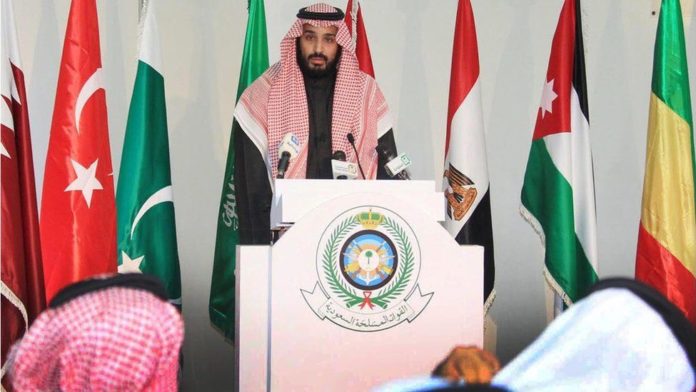“We always take criticism from our friends. If we are wrong, we need to hear that we are wrong. But if we are not wrong, we need to hear support from our friends. What I request is that the thing you actually believe, to say it”. Saudi Defence Minister and Deputy Crown Prince Muhammad Bin Salman.1
In a mid-night press conference on 15 December 2015, Saudi Defence Minister and Deputy Crown Prince Muhammad Bin Salman announced the formation of a thirty four nation coalition to fight terrorism but it was mainly to support Saudi military operations in Yemen. It took many, including some Saudis by surprise. Many countries included in the coalition heard it from the Saudi Defence Minister, resulting in many embarrassing moments. Several international, regional and internal factors were at play in this dramatic shift in Saudi policy. U.S-Iran nuclear deal, less inclination of Obama administration to directly intervene in the Middle East, increased tensions between Iran and Saudi Arabia, rise of popular discontent on Arab streets, gains of extremist groups and re-alignment of new players of Saudi Royal family are some of these factors.
Yemeni Yarn
“The map of Yemen now looks like a series of isolated rooms. Each group stands in its own room and screams about injustice, but no one can hear the others”. A Yemeni political activist.2
Like many post-colonial states, Yemen went through eras of relative stability and internal conflict. Majority of Yemen’s about 25 million population is Sunni belonging to the Sha’afi school of thought and concentrated in populous central and southern region. Zaydis which is a branch of Shia are around thirty percent of the population and are mainly concentrated in northern highlands. Zaydi branch of Shia is closest to Sunnis and Sha’afi branch of Sunni Islam, it is a tolerant and moderate version compared to the more literal and austere Hanbali branch. The Salafi or Wahhabi trend dominant in Saudi Arabia derives its historic legacy from the Hanbali branch. Yemen has no history of any sectarian strife or political struggle between two groups and that is due to the peculiar nature of both Sha’afi and Zaydi components of Yemeni society. A few examples will clarify this point. Zaydis don’t observe many familiar events of Athna Ash’ari branch of Shia such as Ashura. In many areas they don’t even have separate mosques and Zaydis and Sha’afi pray in the same mosques. The roots of Yemeni conflict were political and tribal rather than sectarian or religious. Houthis fought against Saleh’s government who was also Zaydi, later when Houthis made an alliance of convenience with Saleh their major opponent General Ali Mohsin al Ahmar was Zaydi. Shaikh Abdullah bin Hussain al Ahmar who headed the Muslim Brotherhood inspired Islamist mainly Sunni political party Al Islah was also a Zaydi.3
Zaydis are dominant in the northern highlands and are concentrated in Sa’ada and Amran with significant presence in Hajja and Dammar governorates and the capital Sana’a. Later, Zaydis organized a political party named Ansar Allah (Partisans of God). Al-Houthi family has taken the mantle of leadership of Zaydis. It started as a religious and cultural revival movement to preserve its identity in a changing world. It faced twin forces of secular and leftist movement of Yemen and salafist movement from neighboring Saudi Arabia.
In the aftermath of 2011, popular uprising and polarization of society, complex alliances developed inside Yemen. Religious and tribal elements of Zaydis and former President Ali Abdullah Saleh joined hands and competing religious and tribal elements formed a coalition against the Houthi-Saleh alliance. The inevitable clash between Houthis and salafists occurred around the religious institute of Dar al Hadithin Dammaj in Sa’ada governorate. The powerful al Ahmar family joined Salafists against Houthis who were trained alongwith Hezbollah fighters in Iran. In addition, Iran provided material help but it was limited to small arms, mortars and rocket launchers. Iran supported the Houthis in the context of wider conflict with Saudi Arabia where Iran is supporting Shia forces in the region and Saudi Arabia, the Sunnis.
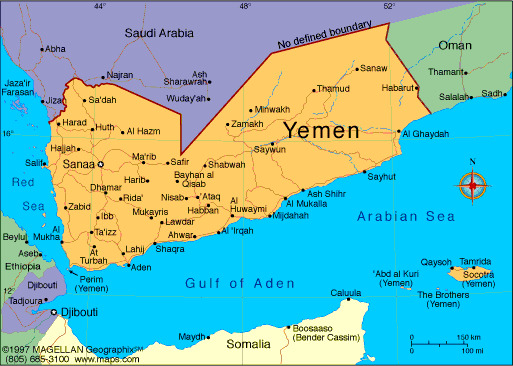
Former Yemeni President Ali Abdullah Saleh rose to power with the help of Hashid tribal confederation. Hashid is one of the two major tribal confederations of northern Yemen; the other is Bakil. The best trained and equipped Yemeni army formation was the Republican Guard that consisted of eighteen brigades. Saleh followed the well trodden path of strongmen of the Middle East by relying on close family members. He appointed his son Ahmed Ali commander of the Republican Guard and half-brother Mohammad Saleh al-Ahmar as the Air Force commander. Saleh also appointed his nephew Brigadier Yahya Saleh as chief of staff of Central Security Forces (CSF). CSF was a paramilitary outfit focused on domestic threats. The counter terrorism division of CSF was trained and equipped by U.S. Yahya’s brother Colonel Ammar Saleh was appointed Deputy of National Security Bureau but he was de facto head of this intelligence outfit. Another nephew Brigadier Tariq Mohammed Abdullah Saleh was appointed commander of 1st Brigade of Special Republican Guard.4 Saleh’s power gradually reduced due to incessant civil war both against Houthis and southern separatists.
General Ali Mohsen al Ahmar was a close confidant of Saleh, he commanded 1st Armored Division (Firqa) and was also military commander of north-west region. During the 2011 uprising Ali Mohsen abandoned Saleh and joined the protestors. Political fragmentation resulted in fracturing of the army. The Republican Guard commanded by Saleh’s son Ahmed Ali and Firqa led by Ali Mohsen were aligned with opposing groups. In December 2012, the interim Yemeni government disbanded both Republican Guard and Firqa.
Houthi rebels overran the capital Sana in 2014. This was the fatal error of judgment. Later, intoxicated with this success they compounded the error by going all the way down to the south and taking Aden. This alarmed not only all regional countries, especially Saudi Arabia but united all their Yemeni opponents. Initial popularity of Houthis among some segments of Yemeni population was due to the fact they had never held any power and they stressed justice and advocated a pluralistic and representative government. Now, they were seen as simply northern invaders who were flexing their muscle to take down every opponent rather than working on a compromised solution to Yemen’s governance crisis.
As the conflict expanded, re-alignment of armed groups also evolved. Houthis joined hands with former President Ali Abdullah Saleh. He brought to the table the loyalty of a large segment of former Republican Guard troops and tribal fighters aligned with him. Saleh also controls the political arm General People’s Congress (GPC). All other Sunni forces including al Islah, Ali Mohsen and al Ahmar family joined the opposite group. The southern region also joined the opposition to Houthi-Saleh coalition. Salafis initially organized around their doctrinal stand but later some Salafis formed a political Rashad Party.
Tribesmen in Yemen are also entangled in shifting alliances. Al Islah does not have its own militia based on political ideology but its leaders with strong tribal ties have erected a network of tribal fighters. Similarly Saleh’s GPC leaders who are also tribal sheikhs have brought their own tribal fighters to the fight. Centrifugal forces are at play and there is strong sentiment for increased autonomy in Marib governorate which holds most of Yemen’s oil and gas.5
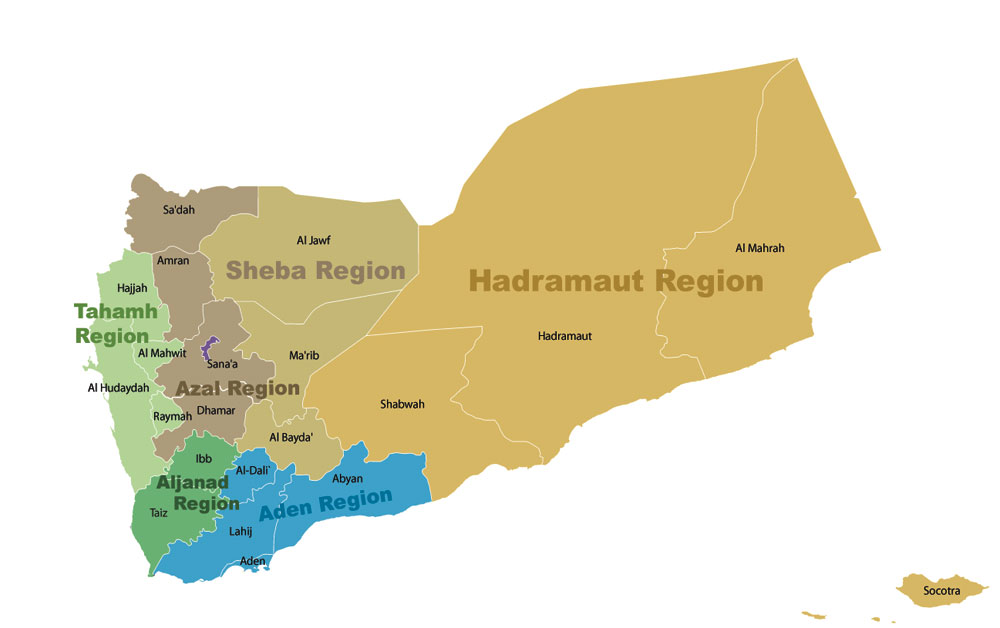
Southern Yemen has its own power dynamics. Southern separatism increased after the defeat in the civil war of 1990s. Southern army units were disbanded and most officers forcibly retired. Southern political movement is Hiraak which advocates independence or a very loose confederation. In view of rising violence and political fragmentation where control of instruments of violence is crucial, various southern armed militias have formed a block calling themselves ‘Southern Resistance’. However this is a paper thin arrangement. There are old bitter memories of infighting between various southern groups over resources. The political Hiraak movement is also divided between Islamist and non-Islamist camps.6
The current stalemate in Yemen has created various zones of influence of competing Yemeni parties and their foreign backers. In post-2011 Yemen, there was discussion about re-organization of Yemen into six federal units. In 2014, region defining committee approved the new proposed six federal unit map of Yemen. Houthis didn’t sign that document and southerners had strong reservations. Houthis traditional area of influence is in Sa’ada, Amran, Sana’a and Dammar governorates that is geographic demarcation of future Azal federal unit. After retreat from other parts of the country, Houthis have come back to their base. However, they are now facing the stark reality of possible de facto fracture of the country a la Iraq style or a very loose confederation. Their base of Azal federal unit has a large population, few resources and no sea outlet. The next phase of their struggle will be to get rid of some parts of the populous Dammar governorate while trying to include Hajja which has a port and Jawf which has natural resources in Azal federal unit. Southern Yemen is proposed to be divided into two federal units. South–eastern unit consisting of Hadramaut, Mahra, Shabwa and Socotra island and south-western unit consisting of Aden, Lahj, Dali and Abyan governorates.7 The Southern parties are also against division of the south into two regions as this will dilute their power in the struggle against northerners.8
“A society grows great when old men plant trees whose shade they know they shall never sit in”. Greek proverb
Coalition Structure & Operations
“A courtyard common to all will be swept by none”. Chinese proverb
Saudi Arabia has genuine national security interests in Yemen. It has a 1500 kilometers border with Yemen that has been an illegal migrants and weapons and drug smuggling trail. These concerns prompted Saudi Arabia to parlay with different Yemeni power brokers, especially tribal sheikhs. It bought influence usually by subsidizing its clients. Saudi Arabia played a positive role in the Yemen crisis in the aftermath of 2011 uprising. As leader of the Gulf Cooperation Council (GCC) initiative, it helped in negotiating the exile of President Saleh, formation of interim government and fully supported U.N. backed National Dialogue Conference (NDC). In early part of the fighting between different Yemeni factions, Saudi Arabia didn’t openly side with any faction. After the death of King Abdullah bin Abdul Aziz, the new King Sultan bin Abdul Aziz maneuvered carefully in internal royal family dynamics. He was able to push the old guard to the periphery and changed the succession plan in favor of his son Muhammad Bin Salman who emerged as a powerful player. Muhammad Bin Salman along with Crown Prince Muhammad Bin Nayef was instrumental in the dramatic shift in Saudi policy towards Yemen.
The announcement of formation of a coalition in December 2015 was to provide a broader legitimacy to the operations already in swing in Yemen for at least nine months. Initially a nine member coalition headed by Saudi Arabia was involved in Yemen, the other eight members were United Arab Emirates (UAE), Qatar, Bahrain, Kuwait, Egypt, Jordan, Morocco and Sudan. However, Saudi Arabia provided the lion’s share of financial and military resources.
In the spring of 2015, aggressive air campaign jump started the operations against Yemeni rebels. This operation was code-named Operation Decisive Storm (Amaliya’at Asifat al-Hazm). By the fall of 2015, the Saudis had gone through a large chunk of their air force ammunition stock. In November 2015, Washington approved an urgent $1.29 billion Saudi request for bombs and ammunition for the air force. The first objective of Operation Decisive Storm was to disable the Houthi militia.9 Rising civilian casualties from air strikes put Saudi Arabia in a very negative light with widespread global criticism. This was followed by Operation Restoring Hope (Amaliya’at I’adaat al-Amal). Groups fighting the Houthi-Saleh alliance were supported by the Saudi led coalition. In addition, tribesmen from central provinces were trained in Saudi Arabia while tribal fighters from South were trained in UAE in preparation for a ground offensive.
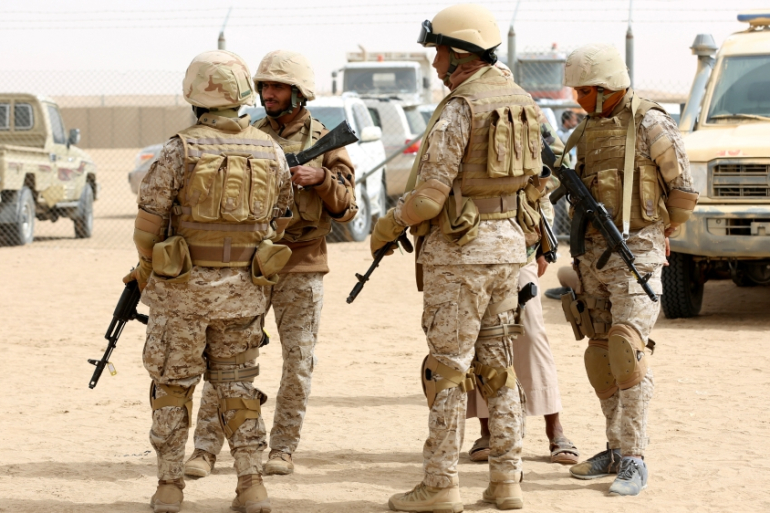
Saudi Arabia deployed about 100 aircraft and 150000 troops for the operation. Troops were mainly deployed along the Yemeni border and southern garrison bases of Najran, Asir and Jizan were augmented along with mobilization of Saudi Arabian National Guards (SANG). Only troops from Royal Saudi Land Forces Airborne Brigade participated in combat operations inside Yemen. This brigade has two parachute battalions and three Special Forces companies. UAE committed about thirty aircraft and also ground troops. Other countries have provided four to fifteen aircraft and naval vessels for sea lane blockade.
Saudi armed forces have been trained and equipped by United Sates and United Kingdom and a number of trainers are based in Saudi Arabia. However, Saudi forces were in lead for air, sea and land operations. The United States only provided some logistical support, especially air refueling and intelligence assistance for the operations. In contrast, UAE security forces are very small in comparison and rely heavily on foreign assistance. Australian Major General Michael Simon Hindmarsh is former head of Special Operations Command and he commanded Australian Task Force 633 in Baghdad in 2008. He was instrumental in the transfer of Australian headquarters from Baghdad to UAE and in this capacity built close personal relations with the Emirati royal family. After his retirement, there were prolonged secret negotiations between Australia and UAE and finally in late 2009, he moved to UAE.10 In view of Arab Spring, major concern of local rulers was large scale internal uprising and foreign advisors were hired to address this problem. Hindmarsh was instrumental in bringing a few dozen former Australian soldiers to train and advise Emirati troops. In addition, hundreds of Latin American ex- soldiers were hired and trained mainly in riot control. Colombian soldiers were brought to UAE by Global enterprise, a company run by former Colombian Special Forces commander Oscar Garcia Batte. Their salaries range from $2000 to $3000 per month compared to about $400 that they make back home. Those deployed in combat zone in Yemen get extra $1000 a week. Former soldiers from Colombia, Panama, Chile and El Salvadore form this 1800 strong Latin American formation. About 450 Colombians from this formation were sent to Yemen in late 2015 when ground operations started.11
In July 2015, Emiratis asked the Americans for logistical support for an amphibious landing at Aden. United States vetoed the proposal on operational grounds as they had no confidence in Emirati troops and feared that in case of failure, they may have to salvage the situation that may require active participation of U.S. troops. The Emiratis went ahead with the plan and surprised many observers, after successful landing they quickly routed rebel forces from the Aden area. They not only got a toe hold but cleared the major port city and important al Anad air base. In this operation, Yemeni fighters, predominantly southern separatists trained in Gulf countries acted as spearhead for the operation.
By August, ground operations by the coalition resulted in pushing Houthi-Saleh forces out of Aden and some parts in the east. The Houthi-Saleh alliance had to retreat to their strongholds in central and northern areas as they had little support in south and east. To increase the pain for Saudi Arabia, the Houthis repeatedly shelled the border Saudi towns of Najran and Jizan resulting in many casualties. Houthis mainly used mortars and Katyusha rickets for these shellings.
On 4 September 2015, Houthis used OTR-21 Tockha missile against a coalition military base in Safer in Marib governorate. The rocket hit the ammunition dump resulting in death of several dozen coalition troops, including fifty two Emirati, ten Saudi and five Bahraini soldiers. On 14 December another Tochka missile attack a military camp near Taiz, it also killed a number of coalition troops. The casualties included Emirati Colonel Sultan Mohammed Ali al-Kitbi and Saudi Colonel Abdullah al-Sahian.12 These two officers are the highest ranking Emirati and Saudi officers killed in action.
The tribal factor is the most unpredictable element in the conflict. They are aligning themselves with Yemeni belligerents and outside patrons to safeguard their own local interest. In some cases, tribesmen attacked Saudi positions on Saudi soil after their kinsmen were killed in air strikes. Members of Takhya tribe attacked a Saudi base, Al-Hamdan tribal members also attacked Saudi positions in Najran after their members were killed in air strikes. This is a serious issue and the Saudis better pay close attention. Members of the same tribal confederations stride the Yemeni-Saudi border. Saudi Arabia has about 800’000 legal and a significant number of illegal Yemeni migrants. Some wealthy Saudi families are of Yemeni descent and they have kept their ancestral ties as well as financial investments in Yemen. Billionaire Bin Ladin and Bin Mahfouz families are of Yemenese descent. Tribes of Najran have close association with their tribal kin across the border. In addition, Najran has a significant Ismaili Shia population and they are not happy campers in view of their own problems with the Saudi government.
The Houthi-Saleh forces, after their retreat from Aden have concentrated in their strongholds in north and central Yemen. They now control Sa’ada governorate and parts of Jawf and Hajjah. Houthis have less influence in the south. Southern militias have a different goal and they want to secure their positions in south and don’t want to waste their resources to strengthen central government. When anti-Houthi forces were chasing them out of Aden, southern militias refused to help them in taking the city of Taiz. Instead they focused on securing the old north-south border.13
On December 15, 2015, the Saudi Defence Minister Prince Muhammad Bin Salman announced at an unexpected press conference the formation of an alliance of Muslim countries, the Islamic Military Alliance to Fight Terrorism (IMAFT) to combat terrorism. The initial list was of 34 countries that increased to 39. Members include Saudi Arabia, UAE, Bahrain, Kuwait, Qatar, Jordan, Turkey, Tunisia, Libya, Lebanon, Egypt, Morocco, Pakistan, Bangladesh, Malaysia, Sudan, Senegal, Somali, Sierra Leone, Gabon, Guinea, Comoros, Ivory Coast, Maldives, Mali, Mauritania, Niger, Nigeria, Benin, Chad, Togo, Djibouti, Yemen, Palestinian, Cote d’Ivoire, Oman and Uganda. There is still confusion about Azerbaijan, Tajikistan, Afghanistan and Indonesia.
Goals of the coalition were explained as ‘fighting terrorism’. It was stated that it will fight terrorists in Iraq, Syria, Libya, Egypt and Afghanistan. Saudi spokesperson Brigadier Ahmed Asiri stated that ‘anyone who sponsors terrorism cannot be a partner in the fight’. This was the code used for excluding Iran, Iraq and Syria from the coalition. In November 2015, a month before announcement of formation of the coalition, Saudi Arabia placed twelve Hezbollah leaders on its terrorist watch list. In addition, Saudi Arabia had already put the Muslim Brotherhood as a terrorist organization with membership of this organization being punishable for up to fifteen years in prison. In addition, many members of the coalition have declared their opponents as terrorist outfits. Turkey has declared Kurdish groups as terrorists and in the aftermath of the failed coup last year, also declared the Gulen movement as a terrorist organization. These little thought out actions have further complicated the situation.
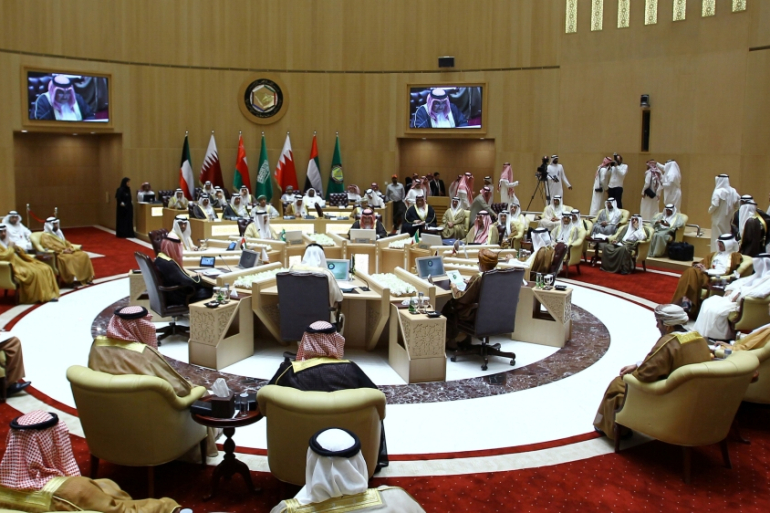
Partners with Prejudice
“Everyone loves justice in the affairs of another”. Italian proverb
The closest allies in the coalition are Saudi Arabia and GCC members, however, there are many areas of differences. Qatar was supporting the Muslim Brotherhood in Egypt and during one year tenure of President Mohammad Morsi, Qatar provided aid and loans worth $8 billion to the chagrin of Saudi Arabia. After Morsi was ousted by the military, Saudi Arabia, UAE and Kuwait provided aid and loans worth up to $12 billion to the military ruler Field Marshal Abdul Fattah al Sissi.14 Many Morsi supporters found refuge in Qatar resulting in breaking of diplomatic relations between Egypt and Qatar. In March 2014, Saudi Arabia declared the Muslim Brotherhood as a terrorist organization and pressure was exerted on Qatar to sever ties with the Brotherhood, the failure of this attempt resulted in break in diplomatic relations. Saudi Arabia, UAE and Bahrain withdrew their ambassadors from Qatar. Qatar has been punching way above its weight class and it should be cautious about entering in into armed conflicts. Oman that shares border with Yemen didn’t join the coalition for over a year as it preferred a negotiated settlement to Yemen conflict.
Egypt and Saudi Arabia are not on the same page about regional threats they are in agreement about halting the increasing Iranian influence in the region but on Syria the outlook is different. Egypt is not enthusiastic about the coalition for different reasons. In March 2015, Egypt sponsored an Arab summit resolution to create an Arab rapid deployment force. The deadline to create this force was September 2015. Egypt wants to enhance and empower a Joint Arab Force Project with Egypt in the lead, reaping economic and military benefits. Al Sissi communicated to Prince Muhammad Bin Salman that he didn’t wish the coalition to replace Joint Arab Force Project. The new leadership in Saudi Arabia had other ideas and they wanted to add more countries into the coalition instead of strengthening the Joint Arab Force Project. In August 2015, they cancelled an Arab foreign ministers meeting that was being convened to discuss mechanism of implementing the Joint Arab Force, Egypt was placated by giving it a new financial and oil package of incentives.15 A few days before Muhammad’s press conference, Saudi Arabia announced $8 billion aid and investment package for Egypt. In April 2016, al Sissi acknowledged the Saudi largesse by transferring two small islands of Tiran and Sanafir in Gulf of Aqaba to Saudi Arabia. There was a public outcry and Egyptian courts intervened to stop this transfer. In January 2017, the highest Egyptian court rejected government’s stance which annoyed the Saudis.
Egypt and Saudi Arabia are not on the same page as far as Syria is concerned. Egypt considers a united Syria essential and is fearful that removal of Assad at this stage may also result in Syria going on the same path as Libya. Egypt has hosted Syrian officials including visit of Director of Syrian National Security Bureau General Ali Mamluke. In the summer of 2015, Egypt was able to take Jordan and UAE to Moscow to hold meetings with Russian officials regarding the Syrian crisis to the consternation of Saudis.
Egypt is also trying to get closer to Russia. The Saudis were furious when Egypt announced in the fall of 2016 that it will host Russian troops for war games along the Mediterranean coast. The joint military exercise involving paratroopers and code named ‘Defenders of Friendship 2016’ was held at al Hammam military base near the coastal city of Alexandria. Egypt voted for two U.N. Security Council resolutions on Syria, one of which was opposed by Riyadh. In October 2016, Egypt voted in favor of a Russian resolution at the Security Council that labeled the battle for Aleppo as a fight against terrorism. The Saudis were furious and next day they stopped oil shipment to Egypt. UAE tried to arrange a meeting between King Salman and Egyptian President al Sissi in Abu Dhabi but the angry Saudis demurred.
In the Libyan theatre, several coalition members are at odds and supporting rival factions. Saudis deferred to Egyptians in Libya but were not happy with the bets that Egyptians are placing on the Libyan table. Egyptians are more concerned about neighboring Libya as they share a long and inhospitable border. Rising extremist threat in the Sinai Peninsula is another major concern. Egypt supports commander of armed forces Marshal Khalifa Belqasim Hafter, who, after serving Gaddafi for a long period ended up living in Virginia for two decades and became an American citizen. He stressed on the salient features of his resume of ‘fighting extremists’ but Washington was washing its hands of such clients. Hafter opened communications with Russia and visited Russia and met higher officials. The current Egyptian backed Libyan government has accused Sudan of providing arms to Islamist militias.
Sudan is another interesting case study of byzantine intrigues, when it was facing sanctions from United States and Europe, it happily picked up the lifeline thrown by Iran. Iran started to work on setting up naval logistical facilities at Port Sudan. The Saudis were naturally furious and in 2013 Saudi Arabia refused to even allow President Omar Hassan al Bashir’s plane to fly over Saudi air space on his way to attend Iranian President Hassan Rouhani’s inauguration ceremony. President Bashir adjusted his sails with changing winds and decided to reap the financial bonanza. Qatar deposited $1.2 billion in Sudan’s central bank in 2014 and next year Saudi Arabia added another $1 billion to the central bank coffers. As expected, Sudan enthusiastically joined the coalition and Saudi Arabia recruited Sudanese soldiers for Yemen operations. Initially, Sudan confirmed that it had sent a battalion for Yemen operations and the numbers have increased since then.
Turkey, under its Islamist government got embroiled in many regional conflicts. It supported the Muslim Brotherhood in Egypt and after Mori’s overthrow Egypt broke diplomatic relations with Turkey. To add insult to injury Egypt recognized the Armenian genocide in the aftermath of the First World War and a member of parliament asked the government to grant political asylum to President Recep Tayyip Erdogan’s nemesis Fethullah Gulen. Egypt opposed the Organization of Islamic Countries (OIC) resolution designating the Gulen movement as terrorist organization and blocked UN Security Council resolution condemning the attempted coup in Turkey and support for the elected government.16 Turkey’s direct military involvement in Syria, renewed hostilities with Turkish Kurds, the failed coup and large scale purges of country’s security forces and intelligence apparatus and increased authoritarian bent of President Erdogan are a bad omen for the Turkish state.
In a December 2015 announcement, Lebanon was a member of the coalition but Saudi Arabia had frozen $4 billion grant to Lebanese security forces in February 2016 because the Lebanese government had not condemned the attack of an Iranian mob on the Saudi embassy in Tehran. African Union troops are fighting militants of al-Shabab inside Somalia. Many countries are outraged that their soldiers are fighting the scourge of Somalia while Somalian leadership in return for a generous financial package is sending Somalian soldiers to a conflict in Yemen.
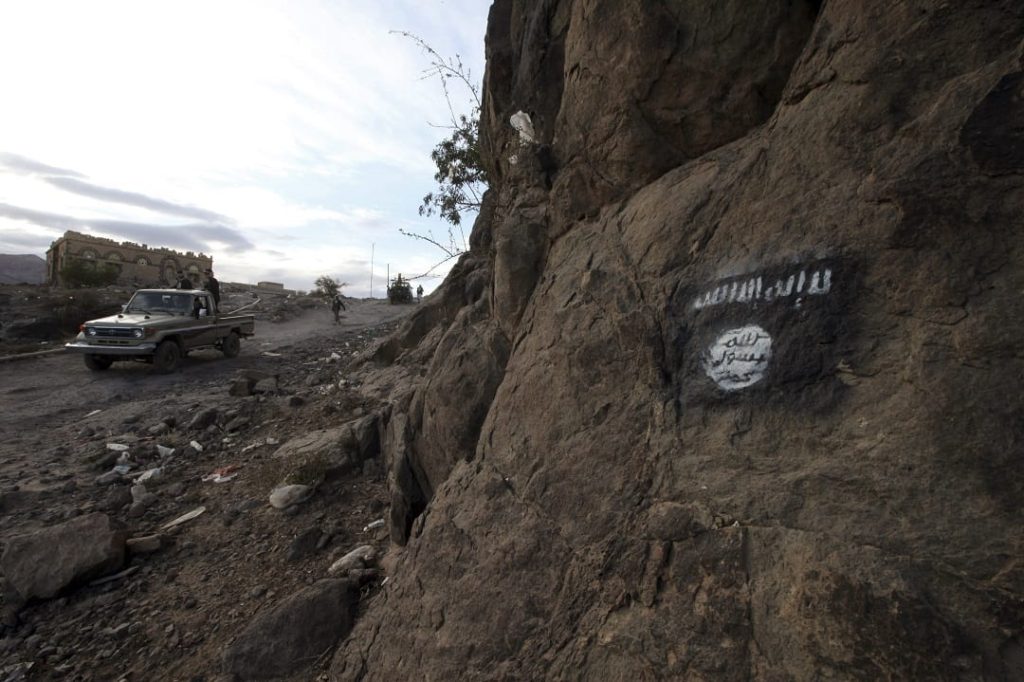
Sobering Realities
“Evil enters like a needle and spreads like an oak tree”. Ethiopian proverb
The Coalition routed Houthis from Aden and some eastern areas, this was success on one front but the unintended consequence was an opening for Al Qaeda in Arabian Peninsula (AQAP) and Wilayat Aden franchise of Daesh. The Hadramout area is a strong recruitment area for AQAP. AQAP and Daesh are competing for recruits and influence in some areas. By providing security and restoration of some basic services in its controlled area, AQAP is addressing local grievances and at least getting acceptance from locals. In contrast, Daesh is a different animal and they are not sentimental, they go with their own agenda. In March 2015, they announced their presence with a bang by killing over 140 people in Zaydi mosques.17 Daesh has presence in Hadramout, Aden and Lahj. AQAP and Daesh in Yemen are gaining ground and it will have negative impact on Saudi security in view of a large Yemen diaspora in the country, extremist trends among some Saudi youth and a porous border.
In Iraq, U.S. air assets are used against Daesh while ground offensive is spearheaded by Iraqi forces, Shia militias and Iranian military advisors as well as fighters. In this capacity, U.S. is essentially acting as the air force for Iranian soldiers. In Syria, the most effective force fighting against Daesh is the Kurdish People’s Protection Units (YPG) and it is supported by U.S. intelligence and air assets. This organization is declared a terrorist outfit by Turkey, hence the U.S. is acting as air force for a terrorist entity according to Turkish dictionary. Turkish artillery has frequently bombarded YPG and in this capacity Turkish artillery is essentially serving as gunners for Daesh. In Syria, the Iranian Revolutionary Guards (IRG) soldiers are fighting Daesh while U.S. and Russian jet planes are pounding Daesh positions. In this capacity, both U.S. and Russia are acting as air force for Iran and Bashar al Assad. In Yemen, Houthis are the most effective fighting force against Daesh and al-Qaeda and looking from this angle, the coalition air force is essentially acting as an air force for al-Qaeda and Daesh. Hezbollah is declared a terrorist organization by the Saudis and GCC, however, in Lebanon, Saudi supported Saad Harriri has made a coalition government with Hezbollah. Publicly everybody is claiming that Daesh is the most dangerous enemy and they are fighting against it, in reality they are working at cross purpose to their own stated goal with the result that conditions on ground are becoming more favorable for extremists to expand their influence.
“The door to evil doing is wide, but the return gate is narrow”. A Yiddish proverb
Way Forward
‘A time is coming when men will go mad, and when they see someone who is not mad, they will attack him, saying: “You are not mad, you are not like us”.’ Anthony the Great
The current crisis in Yemen is just another manifestation of a long drawn internal struggle. The new factor is that everybody is crashing into the room wanting a seat at the table. It has become another theatre of rivalry between Saudi Arabia and Iran. Actions of Saudi Arabia and Iran have caused colossal damage to the region’s economy, political landscape and human resources. Iran’s direct and quite extensive help to Syrian President Bashar al Assad’s murderous campaign against his own citizens is equally matched by Saudi Arabia’s callous and inhumane bombing of poverty stricken Yemen. Both regimes have proved to be equal opportunity destroyers and both are oblivious they are sitting on a potential volcano of their own youth. If they don’t pause and reflect, the fires they are stoking are going to burn down their homes. The regimes of both countries are more fragile than they think.
Both countries have spent precious resources of their own on overt and covert wars and in the process destroyed many societies. In Lebanon, Tehran pushed its proxy Hezbollah into a war with Israel in 2006 purely for its own interests to divert pressure from Israel and the West against its nuclear program. Hezbollah deliberately provoked Israel with full realization how Israel would act. This was not Lebanon’s war but in the process billions of dollars worth of Lebanese infrastructure was destroyed. Prince Muhammad Bin Salman believed that in the next five years, non-oil revenues of Saudi Arabia would reach $100 billion.18 However, in the early phases of the war in Yemen, Saudi Arabia was spending $6 billion per month on a project of destruction and earning the hatred of Yemenis.
A fundamental shift is essential to move away from a dangerous course, the first step being rapprochement between Iran and Saudi Arabia. Oman can serve as a mediator as both countries have some trust in Oman. Oman helped in U.S.-Iranian rapprochement thus earning Iranian goodwill. It is an Arab nation and member of the GCC which provides comfort zone to Saudi Arabia. A back channel for confidence building measures should be then followed by resumption of diplomatic relations between two countries. This direct one to one contact between the two countries is essential to convey to each other concerns and avoidance of over-reading or exaggerating the other party’s actions.
Lowering the temperature between Iran and Saudi Arabia cannot be achieved without a push from their own population. Both countries have quite repressive laws prohibiting freedom of speech and there are not much avenues available for citizens to express their views. However, a gentle push from citizens advocating rapprochement and pulling back from direct conflict can have some effect. Citizens of these countries need to impress upon their own governments to opt for peace and stability and slowly walk away from wars. They need to work in their own societies to encourage dialogue and work on projects of tolerance and understanding. Some very articulate and thoughtful members of intelligentsia and academia in Saudi Arabia, Qatar and Bahrain have expressed very positive ideas and though small in numbers this sphere is worth expanding.
Kinetic operations against extremist groups are an important part of the strategy. However without decreasing friction between states and a frank discussion about critical issue, results will be limited. No one can shoot itself out of this war. The real battle is on the ideological front and nothing short of an intellectual renaissance will be able to push back extremist ideas. Voices of peace need a wider audience. Public and private resources need to be invested in new models of conflict resolution. Social scientists, psychologists and political scientists need to be trained in conflict mediation and resolution. People to people contacts are the most effective way to break the walls of ‘otherness’. Conferences and meetings on a wide ranging subjects and encouraging physicians, academics, artists, musicians, poets and writers from opposing sides to attend. This interaction away from conflict at neutral places and discussing various human needs can open an avenue where effects of bigotry and hatred can be watered down. This is the challenge of the younger generation of these societies. They will decide whether they want to continue to fight the wars of their forefathers or open a new chapter of tolerance, stability and economic progress for their societies.
“I spent thirty five years of my life going from war to war. Now my hopes are for my children. We lost our future. We’re looking for the future of our children”. Shadha Mohammad Ali, an Iraqi housewife, January 2005.
Notes
1 Prince Muhammad Bin Salman interview with The Economist, January 6, 2016
2 Yemen: Is Peace Possible. Crisis Group Middle East Report No: 167, 09 February 2016. International Crisis Group
3 A 2005 U.S. diplomatic cable from Yemen posted by Wiki Leaks gives an overview of this angle. (https://wikileaks.org/plusd/cables/05SANAA1723_a.html
4 Yemen’s Military-Security Reform: Seeds of New Conflict. Crisis Group Middle East Report No 139, 4 April 2013. International Crisis Group
5 Yemen: Is Peace Possible, Crisis Group Middle East Report No: 167, 09 February 2016. International Crisis Group
6 Yemen: Is Peace Possible, Crisis Group Middle East Report No: 167, 09 February 2016. International Crisis Group
7 The Houthis: From Saada to Sanaa. Crisis Group Middle East Report No: 154, 10 June 2014. International Crisis Group
8 http://www.yementimes.com/en/1754/news/3462/Yemen-celebrates-new-map-of-six-regions.htm
9 Prince Muhammad Bin Salman interview with The Economist, January 6, 2016
10 Herald Sun, 02 December 2009
11 The New York Times, 25 November 2015
12 http://uk.reuters.com/article/uk-yemen-security-idUKKBN0TX0FN20151214
13 roup Middle East Report No: 167, 09 February 2016. International Crisis Group
14 http://www.aljazeera.com/indepth/features/2014/03/will-gcc-survive-qatar-saudi-rivalry-201431864034267256.html
15 Ramy Aziz. The Purpose of Saudi Arabia’s Islamic Military Coalition, February 04, 2016, WINEP. http://www.washingtoninstitute.org/policy-analysis/view/the-purpose-of-saudi-arabias-islamic-military-coalition
16 http://www.al-monitor.com/pulse/originals/2016/08/egypt-turkey-reconciliation-coup-erdogan-sisi.html#ixzz4WKuEBwQy
17 Yemen: Is Peace Possible, Crisis Group Middle East Report No: 167, 09 February 2016. International Crisis Group
18 Prince Muhammad Bin Salman interview with The Economist, January 6, 2016


